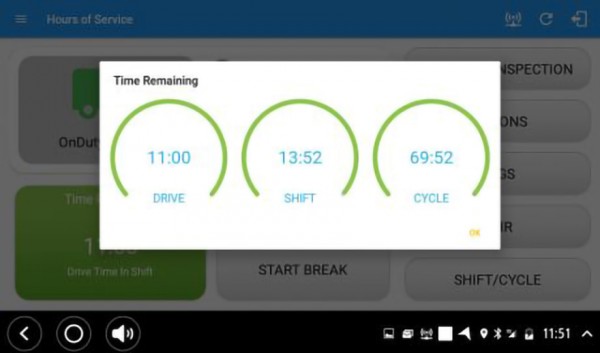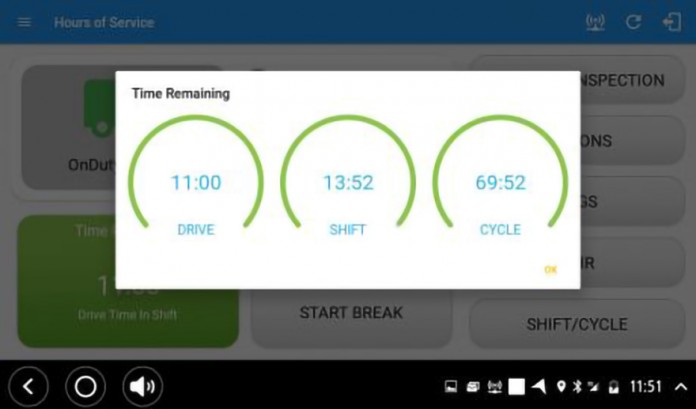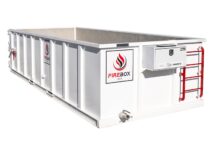 Webfleet Solutions, one of the world’s leading telematics solution providers, dedicated to fleet management, vehicle telematics and connected car services, integrates with M2mDatasmart to provide WEBFLEET customers with the technology and ELD compliance that they require to operate their fleet. The in-vehicle technology offers an accurate electronic record of miles driven, time on the road, and progress on the route.
Webfleet Solutions, one of the world’s leading telematics solution providers, dedicated to fleet management, vehicle telematics and connected car services, integrates with M2mDatasmart to provide WEBFLEET customers with the technology and ELD compliance that they require to operate their fleet. The in-vehicle technology offers an accurate electronic record of miles driven, time on the road, and progress on the route.
While electronic driver logs are becoming more important, the real benefit of the Hours of Service application lies in its impact on planning and business efficiency. Jim William, VP of Sales of M2mDatasmart, explains how the updates of the HOS regulations can influence your towing business.
The FMCSA is revisiting four of their HOS regulations. These new revisions will go into effect on September 29, 2020, at midnight. These new adjustments to the regulations will provide more flexibility without adversely affecting safety.
The first modification expands the short-haul exception. For local drivers, the distance limit of 100 air-mile radius will be expanded to 150 air miles. Previously, this exception was only available to non-CDL drivers using a commercial vehicle over 10,000 lbs. The commercial vehicle (including a tow truck) requires an ELD device and software even when the driver had chosen an exempt status. With the 150 air-mile rule, the towing industry is given added flexibility. You can cross state lines and drive in multiple jurisdictions without recording On Duty Driving versus On Duty Not Driving time. The ELD application merely records the time simply as On Duty. Property hauling and agricultural use carriers are also given the same added flexibility. Remember, this is an exception to the federal rules. Most intrastate rule sets will eventually change to match the federal rules but may not immediately. Travel across state lines is permitted within the 150 air-miles radius exemption but if you normally use the rules for your state and you exceed the 150 air-mile radius you must continue to use Federal rules for your next complete 70 or 80-hour duty cycle. The total maximum on-duty time is also extended from 12 hours to 14 hours, but remember that the workday begins with the first DVIR inspection.
The second change will expand the on-duty driving window during adverse conditions by up to two hours. The hazardous driving exception of FMCSA 395.1(b)(1) can be used to extend driving hours in addition to on-duty hours in a single day. In the Federal system, the new totals will be 13 driving hours and 16 on-duty hours. The towing industry has long benefited from the 16 hours “Big Day” rule that is available once per week under FMCSA 395.1(o). That provision has not changed but from a practical standpoint; if you needed the 2 Hour Driving extension for Adverse Driving conditions previously, you were also forced to use that provision immediately or risk a violation.
The final rule will also allow more flexibility in breaks by requiring a 30-minute break only after 8 hours of driving time instead of 8 hours of on-duty time. On-Duty, Not Driving time will qualify for the break, allowing drivers to use the time to refuel or unload. Drivers will still be required to take a full 30-minute break at one time.
Lastly, modifications to split sleeper berth will allow the 10-hour minimum off-duty requirement to be split into a 7-hour sleeper berth break and 3 hours of off-duty time. The old rule requires 8 hours sleeper berth with 2 hours of off-duty time. Drivers will be able to choose between the 8/2 or 7/3 split. As before, a full 10 hours is still required before the cycle can be reset and the rest breaks can be taken in any order. You must be driving a truck with a full sleeper berth to use this provision.
The FMCSA has been considering updating the regulation for the last 2 years based on feedback from industry leaders. We commend them for these changes. These modifications will save motor carriers and shippers millions of dollars while adding flexibility to the drivers’ workday. Bravo
For more information, visit www.webfleet.com









